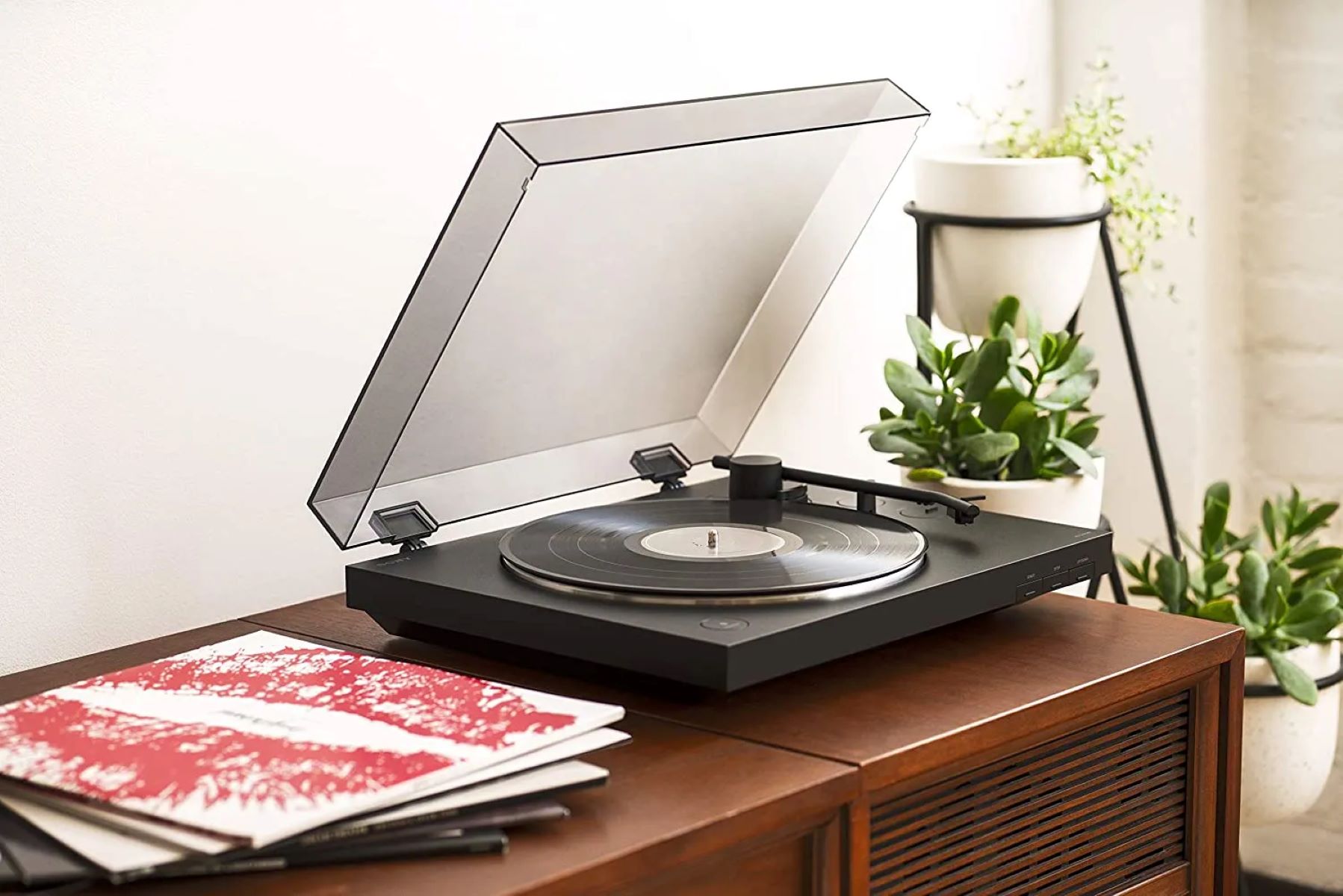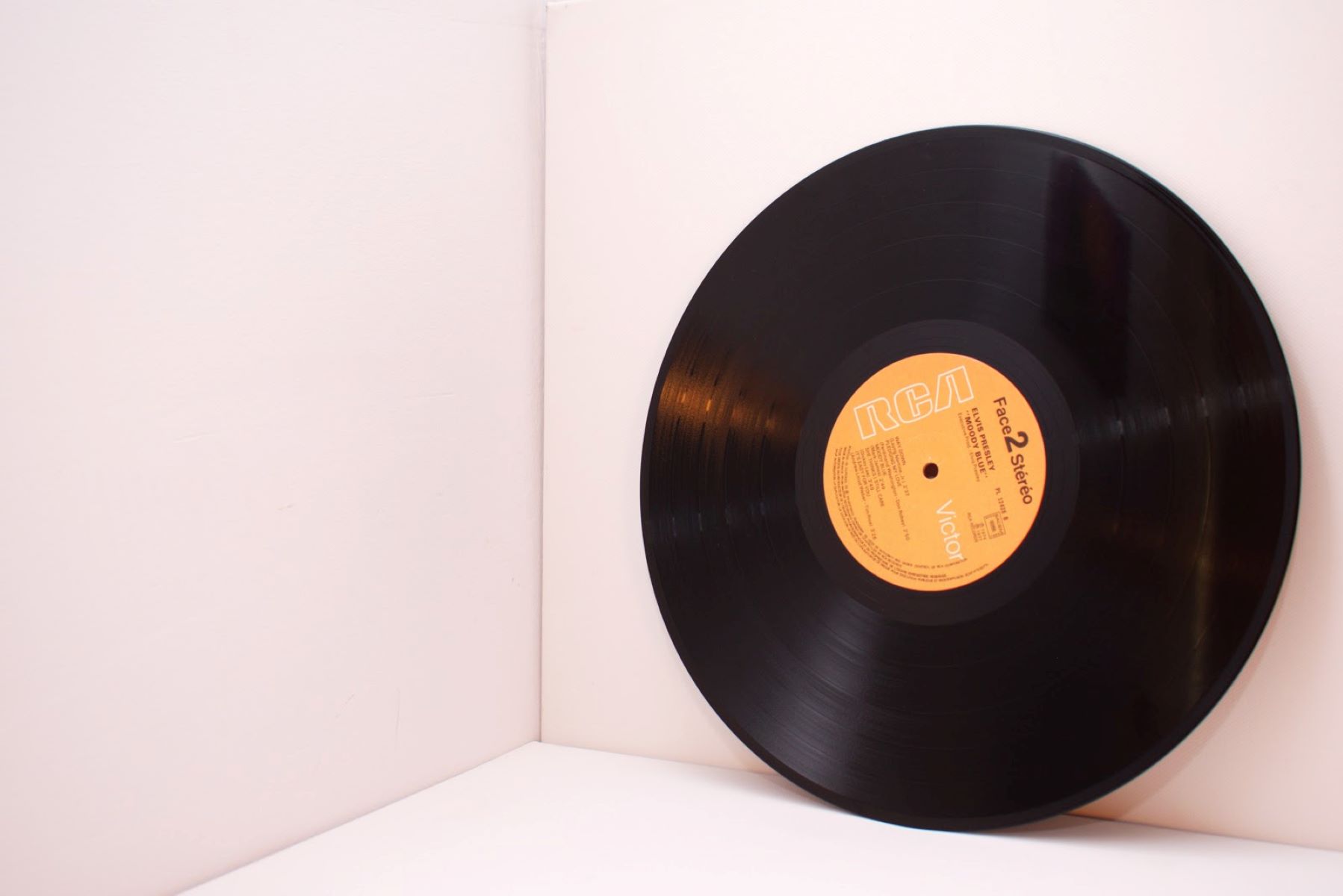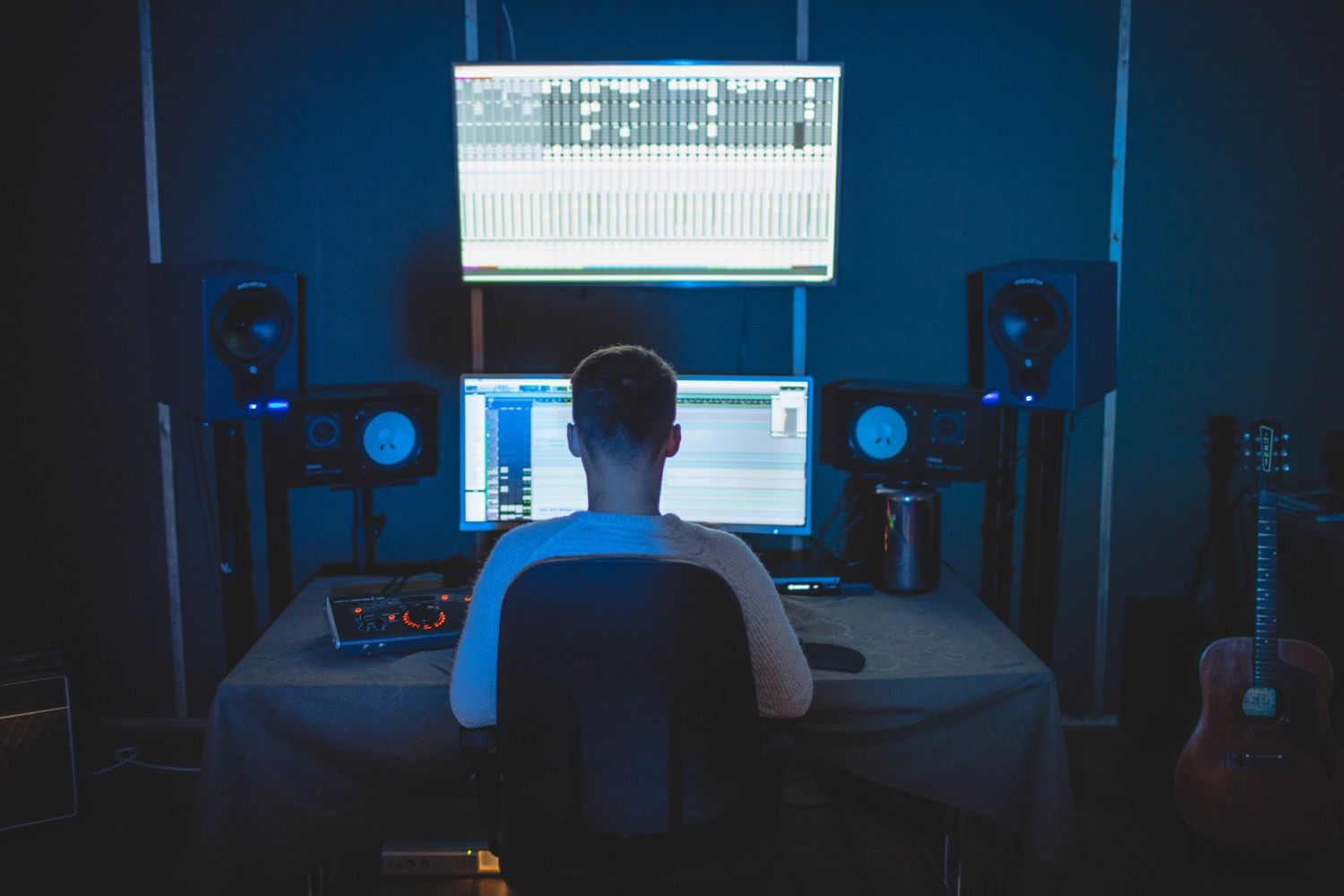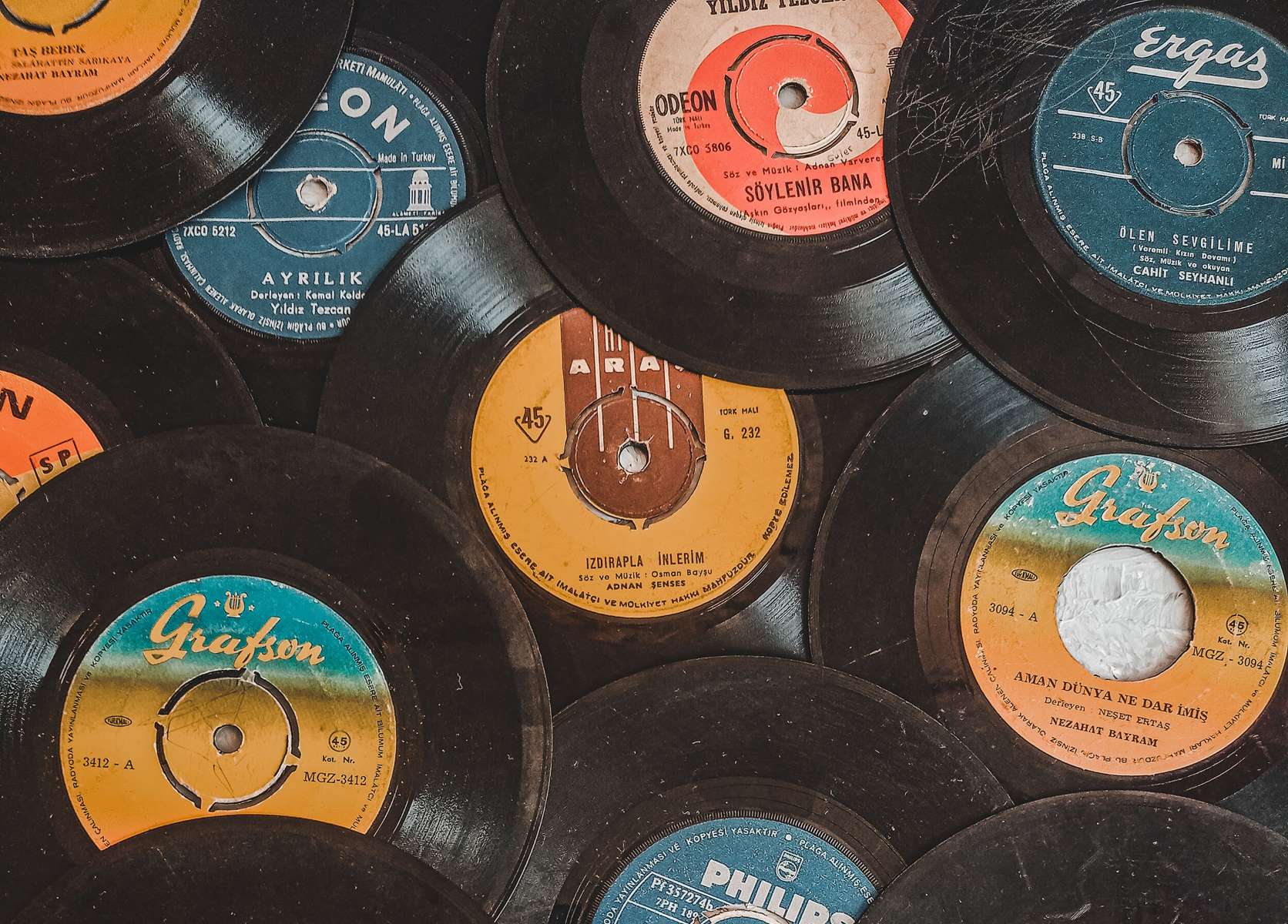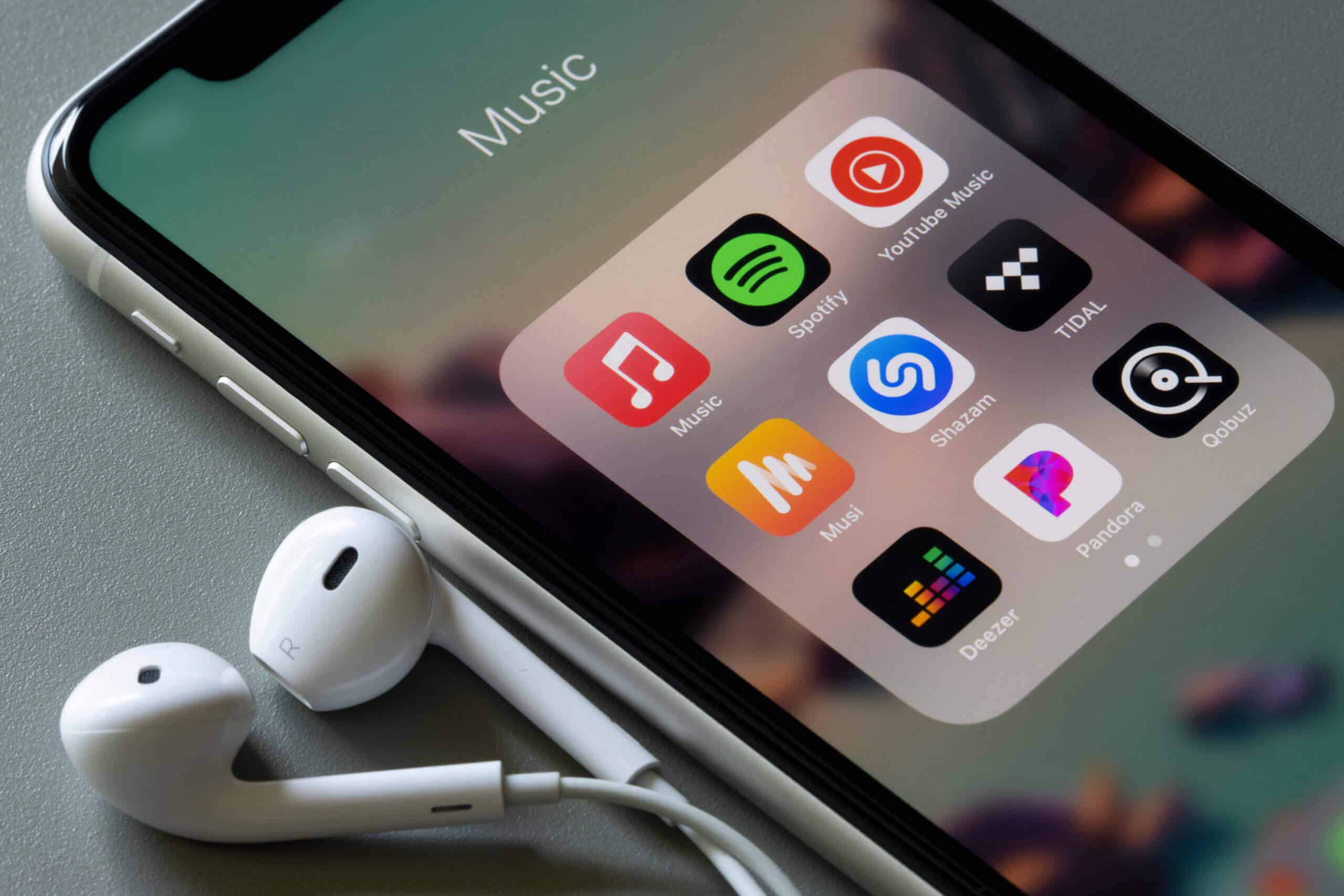Home>Production & Technology>Record Label>How To Get My Music Heard By A Record Label


Record Label
How To Get My Music Heard By A Record Label
Modified: January 27, 2024
Learn how to get your music heard by a record label and increase your chances of success in the music industry. Find out the best strategies and tips to catch the attention of record labels.
(Many of the links in this article redirect to a specific reviewed product. Your purchase of these products through affiliate links helps to generate commission for AudioLover.com, at no extra cost. Learn more)
Table of Contents
Introduction
If you are a talented musician or band looking to make your mark in the music industry, getting your music heard by a record label is a crucial step toward achieving your goal. A record label can provide the resources, connections, and support needed to reach a wider audience and propel your musical career to the next level. However, the process of getting noticed by a record label can be competitive and challenging. In this article, we will guide you through the steps you can take to increase your chances of getting your music heard by a record label.
Before diving into the strategies, it’s important to have a clear understanding of what a record label is and its role in the music industry. A record label is a company that specializes in discovering, promoting, and distributing music. They typically sign artists or bands to contracts, and in return, provide financial support, marketing efforts, and distribution channels to help the artists’ music reach a wider audience. Record labels have a team of professionals, including A&R representatives (Artists and Repertoire), who search for new talent and oversee the development of artists on their roster.
Now that we have established the role of a record label, let’s explore the steps you can take to increase your chances of capturing their attention and getting your music heard.
Researching Record Labels
Before you start reaching out to record labels, it’s important to do your research and identify the ones that align with your musical style and goals. Not all record labels are the same, and each one tends to have a specific niche or genre focus. By targeting the right record labels, you increase your chances of getting noticed and receiving a positive response.
Here are some steps you can take to research record labels:
- Identify your musical style: Understand the genre and sub-genres that best describe your music. This will help you narrow down your search and identify the labels that specialize in your style.
- Study successful artists in your genre: Look into the artists who are similar to you in terms of sound and style. Research the labels they are signed to, as these labels may be a good fit for your music.
- Check out industry publications and websites: Music industry publications and websites often publish articles and lists featuring record labels and their areas of focus. Explore these resources to gather information on relevant labels.
- Use social media and online platforms: Social media platforms like Twitter, Facebook, and Instagram can be valuable sources of information. Follow record labels and their artists to stay up to date with their latest signings and activities.
- Attend music industry events: Networking events, conferences, and music festivals provide excellent opportunities to connect with industry professionals, including representatives from record labels. Take advantage of these events to gather information and make meaningful connections.
Once you have a list of potential record labels, further investigate their background, reputation, and track record. Look for information on their roster of artists, their recent signings, and their success stories. It’s important to ensure that the record label is reputable and has a history of supporting and promoting artists like you.
Remember, the research phase is crucial as it helps you determine which record labels are the best fit for your music. Taking the time to do thorough research will save you from wasting time and effort by targeting the wrong labels. Your ultimate goal is to find a record label that resonates with your music and can help you achieve your artistic and career aspirations.
Building a Professional Sound
Once you have identified the record labels that align with your musical style, it’s important to focus on building a professional sound that stands out. A record label wants to sign artists with a unique and polished sound that has the potential to resonate with a wide audience. Here are some tips to help you build a professional sound:
- Invest in quality recording equipment: To create a professional sound, it’s important to have access to high-quality recording equipment, including microphones, instruments, and audio interfaces. This will ensure that your recordings are crisp, clear, and of the highest quality.
- Work with experienced producers and engineers: Collaborating with experienced producers and engineers can greatly enhance the production value of your music. They can guide you in achieving the desired sound and assist in the mixing and mastering process.
- Focus on songwriting and arrangement: Strong songwriting and well-crafted arrangements are essential for creating memorable and engaging music. Spend time honing your songwriting skills and experimenting with different arrangements to make your music stand out.
- Practice and refine your performance skills: In addition to sounding great on recordings, it’s important to deliver a compelling live performance. Practice regularly and refine your performance skills to captivate audiences and showcase your talent.
- Experiment with different sounds and genres: While it’s important to have a recognizable musical style, don’t be afraid to experiment with different sounds and genres. This can help you stand out and showcase your versatility as an artist.
- Seek feedback from trusted sources: Share your music with friends, fellow musicians, and industry professionals for feedback. Constructive criticism can help you identify areas for improvement and refine your sound.
Remember, building a professional sound is an ongoing process. Continuously strive to improve your skills, explore new techniques, and stay up to date with the latest trends in the industry. A record label is more likely to take notice of artists who have put in the effort to develop a unique and polished sound.
Creating a Demo or EP
Once you have established a professional sound, the next step in getting your music heard by a record label is to create a compelling demo or EP (Extended Play). This will serve as your calling card and showcase your talent and potential as an artist. Here are some important considerations when creating your demo or EP:
- Select your best tracks: Choose your strongest and most representative tracks for inclusion in your demo or EP. These songs should showcase your unique sound, songwriting skills, and overall potential as an artist.
- Pay attention to production value: Ensure that the production quality of your demo or EP is top-notch. A well-produced and well-mixed recording can make a strong impression on record labels and industry professionals.
- Consider the track order and flow: Arrange your songs in a way that creates a cohesive and engaging listening experience. Think about the order of the tracks and how they flow from one to another.
- Include a variety of styles and moods: Demonstrating your versatility as an artist can be beneficial. Include tracks that showcase different styles, moods, and dynamics to highlight your range as a musician.
- Create visually appealing artwork and packaging: The visual presentation of your demo or EP is important as well. Invest time in designing eye-catching artwork and packaging that reflects your musical style and captures the attention of record labels.
- Include a professional and informative bio: Along with your demo or EP, include a well-written bio that provides background information about you as an artist. Highlight your accomplishments, musical influences, and unique selling points.
Once your demo or EP is ready, consider making physical copies as well as creating a digital version. Physical copies can be sent to record labels and industry professionals, while the digital version can be shared online through platforms like SoundCloud, Bandcamp, or your own website.
It’s important to note that while creating a demo or EP is essential, it’s not the end-all-be-all. Record labels may also consider other factors such as your live performance, online presence, and potential for growth as an artist. However, a well-crafted demo or EP can significantly increase your chances of getting noticed by a record label and opening doors for further opportunities.
Networking and Building Connections
In the music industry, networking and building connections play a vital role in getting your music heard by record labels. Connections can open doors, provide opportunities for collaboration, and increase your visibility within the industry. Here are some strategies to help you effectively network and build connections:
- Attend industry events: Music conferences, workshops, and seminars are great opportunities to meet people in the industry. Attend these events, participate in panel discussions, and engage in conversations with industry professionals, including representatives from record labels.
- Join music industry organizations: Become a member of music industry organizations and associations. These organizations often hold events and provide resources for artists. Being a part of these communities can help you network with like-minded individuals and industry insiders.
- Utilize social media: Leverage the power of social media platforms to connect with industry professionals, artists, and music enthusiasts. Follow record labels, engage with their posts, and share your own music and updates. Engaging with others on social media can lead to valuable connections.
- Build relationships with local industry contacts: Get involved in your local music scene and build relationships with venue owners, promoters, and other musicians. They may have connections to record labels or be able to recommend you to industry professionals.
- Collaborate with other artists: Collaborations with other artists can allow you to tap into their network and gain exposure to their audience. Look for opportunities to collaborate on songs, performances, or even joint projects with like-minded artists.
- Utilize online music platforms: Platforms like SoundCloud, Bandcamp, and YouTube can provide exposure to a global audience. Interact with other artists, comment on their work, and share your music with them. Building relationships with fellow artists online can lead to mutual support and opportunities for growth.
- Personalize your outreach: When reaching out to industry professionals or record labels, take the time to personalize your messages. Avoid generic and impersonal emails. Research the recipient, reference their work, and explain why you believe your music would be a good fit for their label.
Remember, networking is not just about getting something from others, but also about building genuine relationships. Be authentic, approachable, and supportive of others in the industry. Treat every interaction as an opportunity to learn, grow, and contribute to the community.
By actively networking and building connections, you increase your chances of getting your music heard by record labels and industry professionals who can help propel your career forward.
Writing a Compelling Biography
When trying to get your music heard by record labels, having a compelling biography is crucial. Your biography serves as a snapshot of your musical journey, accomplishments, and unique qualities as an artist. It allows record labels to get to know you and understand your artistic vision. Here are some tips for writing a compelling biography:
- Showcase your uniqueness: Highlight what sets you apart from other artists. Discuss your musical influences, the genres you explore, and the distinct sound and style you bring to your music. Emphasize what makes you different and memorable in the industry.
- Share your story: Talk about how you got into music, your musical background, and the experiences that have shaped your artistry. Be authentic and genuine in sharing your journey as a musician.
- Highlight accomplishments: Include any notable achievements, such as performances at renowned venues, awards, or collaborations with well-known artists. These accomplishments help validate your talent and demonstrate your dedication to your craft.
- Discuss your musical influences: Talk about the artists or bands who inspire you and have influenced your musical style. Explain how their work has impacted your own artistic vision and approach.
- Describe your live performances: If you have a strong stage presence and engaging live performances, make sure to mention it. Highlight any memorable experiences or interactions with the audience during your shows.
- Keep it concise: While it’s important to provide enough information, make sure your biography is concise and easy to digest. Stick to the most relevant and compelling details about your music career.
- Include quotes or testimonials: If you have received positive feedback or testimonials from industry professionals, fellow musicians, or fans, consider including them in your biography. These quotes can add credibility to your work and demonstrate the impact you have made.
- Proofread for clarity and accuracy: Ensure that your biography is free of spelling and grammatical errors. A well-polished and professional-looking bio showcases your attention to detail.
Remember that your biography is a tool to pique the interest of record labels and industry professionals, so make sure it reflects your unique story and artistic identity. It should be engaging, informative, and leave a lasting impression on the reader. Regularly update your biography as you achieve new milestones and continue to evolve as an artist.
A well-crafted biography can make a significant difference in capturing the attention of record labels and ultimately getting your music heard.
Crafting a Press Kit
When you’re trying to get your music heard by record labels, crafting a well-designed and informative press kit can greatly enhance your chances of making a positive impression. A press kit is a collection of materials that provide an in-depth overview of you as an artist and your music. It is typically used by record labels, music journalists, and industry professionals to gain a deeper understanding of your artistry. Here’s what you should include in your press kit:
- Biography: Include a concise and engaging biography that highlights your unique story, musical style, influences, and notable achievements. This should capture the essence of your artistic journey and leave a lasting impression.
- High-quality press photos: Include high-resolution, professional photos that visually represent your image as an artist. These photos should be visually appealing, well-lit, and showcase your personality and style.
- Music samples: Provide a selection of your best tracks for the recipient to listen to. Include well-produced, high-quality audio files or links to streaming platforms where your music can be accessed.
- Lyrics: If applicable, include the lyrics to your songs. This allows the recipient to delve deeper into your songwriting and lyrical themes.
- Press coverage: If you have received any notable press coverage, such as reviews, interviews, or features, include them in your press kit. This demonstrates that you have garnered attention and interest from the media.
- Video content: If you have music videos or live performance footage, include it in your press kit. Visual content can provide a dynamic and immersive experience for the recipient.
- Stage plot and technical requirements: If you perform live, include a stage plot that shows the setup and placement of instruments and equipment during your performances. Additionally, provide any specific technical requirements for your live shows.
- Contact information: Clearly present your contact information, including your email address, phone number, social media handles, and website. Make it easy for the recipient to reach out to you.
When designing your press kit, aim for a professional and visually appealing presentation. Use high-quality graphics and design elements that align with your artistic style. It’s also important to make your press kit easily accessible by providing digital versions that can be sent via email or uploaded to your website.
A well-crafted press kit provides a comprehensive overview of your music and artistic identity. It’s an essential tool for making a strong impression, capturing the attention of record labels, and gaining the interest of music industry professionals.
Submitting Your Music to Record Labels
When you feel ready to submit your music to record labels, it’s important to approach the process strategically to maximize your chances of getting noticed. Here are some key steps to follow when submitting your music to record labels:
- Research submission guidelines: Before sending your music, thoroughly research the submission guidelines of each record label you’re targeting. Some labels have specific requirements, such as preferred file formats, demo length restrictions, or submission forms on their website. Adhering to these guidelines shows that you are respectful of their time and attention.
- Prepare a personalized message: Take the time to craft a personalized and concise message to accompany your music submission. Address the recipient by name, mention why you believe your music would be a good fit for their label, and express your genuine interest in working with them. Be professional and respectful in your communication.
- Choose the right tracks: Select a few of your best tracks that showcase the range and quality of your music. Consider including variety to demonstrate your versatility as an artist. Pay attention to the order in which you present your tracks, making sure to start strong and maintain interest throughout the submission.
- Provide easy access to your music: Make it as easy as possible for the recipient to listen to your music. Provide clear and accessible links to your tracks, either through streaming platforms or by hosting them on your website or a trusted file-sharing service. Avoid attaching large files to your email, as they may be filtered or cause issues.
- Include your press kit: Attach your well-crafted press kit to the email or provide a link where it can be accessed. This allows the record label to delve deeper into your story, achievements, and visual representation as an artist.
- Follow up respectfully: After submitting your music, allow some time for the record label to review your submission. If you haven’t heard back after a reasonable period, consider sending a polite follow-up message to inquire about the status of your submission. However, avoid being pushy or demanding, as patience and persistence are key.
- Consider multiple submission methods: In addition to email submissions, explore other avenues for submitting your music. Some record labels may have dedicated submission portals on their website, while others may prefer physical copies. Tailor your approach based on the preferences outlined in their submission guidelines.
Remember, submitting your music to record labels is just one step in your music career journey. It’s important to set realistic expectations, remain persistent, and continue to focus on improving your craft. Even if you receive rejections, view them as opportunities for growth and keep striving to reach your goals.
Lastly, keep in mind that the process can be subjective, and different record labels may have different tastes and priorities. Don’t become discouraged by rejections and stay true to your artistic vision. With perseverance and the right opportunities, you can make your mark in the music industry.
Following Up with Record Labels
After submitting your music to record labels, it’s crucial to follow up to increase the chances of grabbing their attention and keeping your music on their radar. Following up shows your dedication, professionalism, and genuine interest in working with the label. Here are some key points to consider when following up:
- Give it some time: Allow a reasonable amount of time for the record label to review your submission and respond. The time frame can vary depending on the label and their workload. Generally, waiting for a couple of weeks before following up is advisable.
- Send a polite email: Craft a concise and polite follow-up email to inquire about the status of your submission. Express your appreciation for their time and consideration, and politely ask if they had a chance to review your music. Keep the email professional and avoid being pushy or demanding.
- Provide a reminder: In your follow-up email, briefly remind the recipient of your initial submission, mentioning the date and the key details of your music. This helps refresh their memory and makes it easier for them to locate your submission if it got lost or overlooked.
- Show gratitude: Thank the recipient for their time and consideration once again in your follow-up email. Maintaining a positive and gracious tone leaves a lasting impression and demonstrates your professionalism and appreciation for their attention.
- Offer additional materials: If you have released new music, received positive press coverage, or achieved any significant milestones since the initial submission, consider mentioning it in your follow-up email. This gives the recipient an opportunity to explore more of your work and see your continued growth as an artist.
- Respect the response (or lack thereof): Understand that record labels receive numerous submissions and may not be able to respond personally to each one. If you receive a rejection or no response, accept it gracefully and view it as part of the journey. Remain persistent and keep focusing on your music career.
- Continue building relationships: Remember that following up doesn’t necessarily mean you’re ending the communication. Use this opportunity to build a lasting relationship. Ask if you can send future releases or updates, and inquire if there are any other ways you can stay connected with the label.
Timing and the way you follow up can play a crucial role in leaving a positive impression on record labels. However, it’s important to note that there is no guarantee of a response or a positive outcome. Keep an open mind and explore other avenues for exposure and opportunities in the music industry.
Overall, the key is to strike a balance between persistence and professionalism when following up with record labels. Be polite, patient, and continue to work on your music. With the right opportunity and the right timing, you can achieve your goals of getting your music heard by a record label.
Independent Release and Promotion Options
If getting signed to a record label proves challenging, it doesn’t mean your music journey has to come to a halt. With the advancements in technology and the rise of independent artists, there are numerous options available to release and promote your music independently. Here are some strategies for independent release and promotion:
- Digital Distribution Platforms: Utilize online music distribution platforms such as TuneCore, CD Baby, or DistroKid. These platforms allow you to distribute your music to popular streaming services like Spotify, Apple Music, and more. You retain control of your music while reaching a global audience.
- Create a Professional Website: Establish an online presence by building a professional website to showcase your music, biography, upcoming shows, and merchandise. A well-designed website can help you build credibility and engage with your fans directly.
- Social Media Marketing: Leverage the power of social media platforms to connect with your audience, build a fan base, and promote your music. Regularly share updates, engage with your followers, and consider strategies like targeted advertising to reach a wider audience.
- Collaborations and Features: Collaborate with other artists, either on songs or through guest appearances on their tracks. This can help expand your reach and introduce your music to their fanbase. Seek opportunities to feature on playlists, podcasts, or radio shows to gain exposure.
- Live Performances: Focus on live performances and booking gigs at local venues, festivals, and events. Establishing yourself as a captivating live performer can help you build a loyal fan base and gain recognition from industry professionals attending these events.
- Music Videos and Visual Content: In the digital age, visual content is highly engaging. Produce high-quality music videos and other visual content to complement your music and share them on platforms like YouTube. This can help attract new fans and enhance your online presence.
- Press and Media Outreach: Reach out to music bloggers, online magazines, and local press to secure reviews, interviews, and features. Building relationships with influencers and tastemakers in your genre can help broaden your exposure and attract the attention of record labels or industry professionals.
- Mailing List and Email Marketing: Create a mailing list to stay connected with your fans. Offer exclusive content, pre-releases, and updates in exchange for their email addresses. Regularly send newsletters to keep them engaged and informed about your music and upcoming releases.
Remember that independent release and promotion require consistent effort and dedication. Be proactive in seeking out opportunities, engage with your audience, and continue to develop your sound and brand. With a strong DIY (do-it-yourself) mindset and strategic use of the available resources, you can pave your own path to success in the music industry.
Conclusion
Navigating the world of record labels can be a daunting task, but with the right strategies and mindset, you can increase your chances of getting your music heard. It all starts with thorough research to identify the record labels that align with your musical style and goals. Building a professional sound and creating a compelling demo or EP are essential steps in showcasing your talent and potential to record labels.
Networking and building connections play a crucial role in the music industry. Attend industry events, join music organizations, and utilize social media platforms to connect with industry professionals and fellow artists. Craft a captivating biography that showcases your uniqueness and accomplishments, and create a press kit that allows record labels to delve deeper into your artistry.
When it comes to submitting your music, follow the submission guidelines of each record label, and personalize your message to demonstrate your genuine interest in working with them. Be patient but proactive in following up, and remember that rejections are part of the process. Consider independent release and promotion options, utilizing digital platforms, social media, live performances, collaborations, and more to reach a wider audience and build your fan base.
In conclusion, the music industry is fiercely competitive, but with persistence, creativity, and hard work, you can make significant strides towards getting your music heard by record labels. Remember to stay true to yourself and your artistry, continue honing your craft, and embrace the journey of becoming a successful musician. Don’t let setbacks discourage you; use them as fuel to drive you forward. Your dedication, talent, and perseverance will increase your chances of realizing your dreams, whether it be through a record label deal or independent success.


